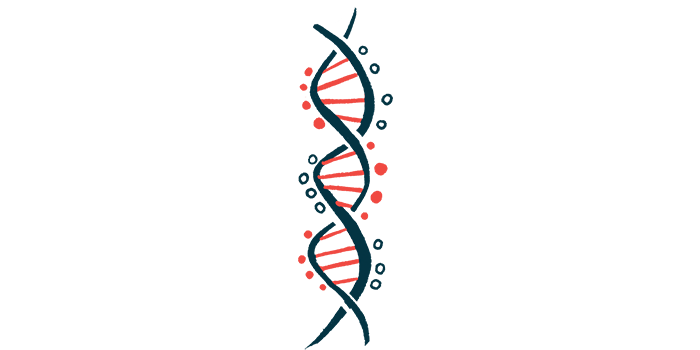Tumor suppressor microRNA prevents lung scarring, study finds
Let-7 serves as braking mechanism against formation of profibrotic cells

Let-7, an established tumor suppressor microRNA that controls gene activity, plays a key role in lung tissue repair and the development of pulmonary fibrosis (PF), which is marked by scarring of the lungs, a study discovered.
Mice lacking let-7 in lung cells spontaneously develop lung injury, demonstrating that the tumor suppressor microRNA serves as a braking mechanism against the formation of profibrotic cells following lung injury and tissue regeneration, according to study data.
“Let-7 is expressed in all the organs,” Antony Rodríguez, PhD, associate professor at Baylor College of Medicine in Texas, and the study’s corresponding author, said in a university news story. “Our findings support exploring whether the mechanism we have discovered also plays a role other organ fibrosis.”
The study, “Let-7 restrains an epigenetic circuit in AT2 cells to prevent fibrogenic intermediates in pulmonary fibrosis,” was published in Nature Communications.
Lungs’ ability to heal themselves lessens with age
PF is an age-related respiratory disease marked by fibrosis, or scarring, in the lungs. It’s part of a larger group of similar conditions collectively known as interstitial lung diseases. Such scarring causes the lungs to stiffen and harden, impeding the passage of oxygen into the bloodstream, and leading to symptoms that may include shortness of breath and a dry, hacking cough.
“Pulmonary fibrosis refers to a group of incurable interstitial lung diseases that usually affect people over 50 years old,” Rodríguez said. “The lungs of affected individuals become stiff due to improper healing that makes it difficult to breathe.”
Normally, the lungs can repair themselves after repeated injuries, such as those caused by lung infections or other environmental triggers. However, with age, their healing capacity declines.
As people age, [certain] cells become dysfunctional — instead of repairing the lungs, they create scars, which is what we see in pulmonary fibrosis.
Lung repair is mediated by alveolar type 2 (AT2) cells, which line the alveoli, the tiny sacs in the lungs where oxygen passes into the bloodstream. With lung injury, some AT2 cells transform into alveolar type 1 (AT1) cells to heal the injury. At an older age, AT2 cells lose their ability to become AT1 cells and start promoting scar tissue formation.
“Progenitor stem cells called AT2 are in charge of lung repair and healing,” Rodríguez said. “Lung injuries activate AT2 stem cells, which then orchestrate the healing process by producing AT1 cells. As people age, AT2 cells become dysfunctional — instead of repairing the lungs, they create scars, which is what we see in pulmonary fibrosis.”
Studies in human PF tissues and animal models have shown reduced production of let-7 microRNAs (miRNAs), a family of tiny RNA molecules that repress gene activity. Let-7 is recognized as a tumor suppressor that prevents the growth and spread of cancer stem cells.
In this study, Rodríguez and colleagues investigated whether let-7 plays a role in transforming healthy AT2 cells into fibrosis-promoting AT2 cells.
“In our lab, we focus on lung injury and regeneration and the healing processes that go wrong in pulmonary fibrosis,” Rodríguez said. “We examined the molecular mechanisms that promote the formation of AT2 cells that lead to scarring and inflammation in the lung.”
Modulated genes tied to cell renewal, growth
When researchers deleted let-7-afd, a let-7 family member, in mice’s AT2 cells, blood oxygen levels dropped, and the animals developed spontaneous lung injury. The loss of let-7-afd also triggered the uncontrolled growth of AT2 progenitor stem cells and the formation of alveolar differentiation intermediate cells, a type of cell found in fibrotic lungs.
Further experiments showed that let-7 modulated genes that were associated with cell renewal, growth, and differentiation, and which served as a braking mechanism against the formation of intermediate cells following lung injury and alveolar regeneration.
Conversely, the lack of let-7 in AT2 cells stimulated the expression of profibrotic and pro-cancer genes, made cells vulnerable to DNA damage, promoted programmed cell death, and prevented the transformation of AT2 to AT1 cells. Let-7-afd loss also disrupted epigenetic mechanisms that control gene activity, leading to altered gene activity in profibrotic AT2 cells.
Finally, the team confirmed that human aberrant basaloid (AB) cells, a cell type found in fibrotic lungs, from idiopathic pulmonary fibrosis patients showed increased activity in profibrotic genes normally targeted and controlled by let-7 miRNA.
“Our observation that AB cells from IPF patients express higher levels of the let-7 targetome offers the enticing possibility that targeted delivery of let-7 could be used as a treatment,” the researchers wrote.
These cancer-associated genes become more active as the AT2 cells were being reprogrammed into fibrotic scar-forming cells, Rodríguez said. “Probing further showed that let-7 also plays an integral role in modulating tumor-like pathways epigenetically … in scar-forming AT2 cells.,” he added.









